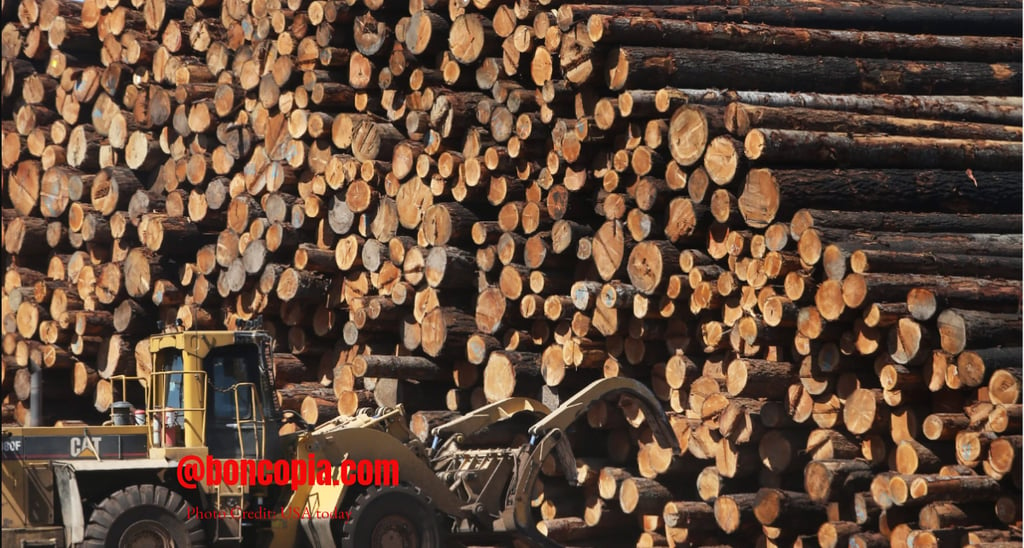Trump’s Timber Tango: Logging Our Way to Economic Growth or Environmental Doom?
5/28/20254 min read


Trump’s Timber Tango: Logging Our Way to Economic Growth or Environmental Doom?
In a move that’s stirring both applause and alarm, former President Donald Trump has announced plans to sign an executive order that could reshape America’s forests—and our relationship with Canada. The goal? To ramp up domestic timber production by allowing extensive logging on federal lands, ostensibly to reduce our reliance on Canadian lumber and boost the economy. But as the chainsaws rev up, questions loom large: Is this a savvy economic strategy, or are we logging our way into an environmental crisis?
The Plan: More Trees Down, More Dollars Up
Trump’s proposal, detailed in a recent video shared on X, centers on an executive order that would “free up our forests” for logging. The idea is straightforward: by cutting down trees, we can generate revenue, create jobs, and even mitigate wildfire risks through measures like fire divides—wide swaths of land cleared of trees to prevent fire spread. Trump’s rhetoric is clear: “We don’t need Canada’s lumber. We have more lumber than they do.” This stance is part of a broader push for self-sufficiency, echoing his administration’s focus on leveraging natural resources for economic gain.
The White House’s official stance, as outlined in a March 2025 document, supports this approach, emphasizing “active management of America’s forests” to reduce wildfire risk and decrease dependence on foreign timber. The plan targets vast swathes of national forests, potentially affecting millions of acres of land. It’s a bold move, framed as a win-win: economic growth through timber sales and a safer, fire-resistant landscape.
The Backdrop: Trade Tensions and Environmental Pushback
This policy doesn’t emerge in a vacuum. It’s set against ongoing trade tensions with Canada, particularly concerning tariffs. Trump’s administration has previously imposed tariffs on Canadian goods, arguing that access to the U.S. market is a privilege that should be leveraged for national security and economic advantage. Now, with this timber policy, the message is clear: why buy lumber from Canada when we can produce it ourselves?
But not everyone is on board. Environmentalists and scientists are sounding the alarm. The World Wildlife Fund (WWF) warns that intensive timber production, while necessary to meet global demand, can have significant adverse impacts, including the conversion of high-conservation-value forests and social and environmental harm. Critics argue that aggressively felling forests, especially established, fire-resistant trees, might actually increase wildfire risks rather than reduce them. As one wildfire scientist put it, “This Trump executive order is the most blatant attempt in American history by a president to hand over federal public lands to the logging industry.”
The Science of Forests and Fire
Let’s dig into the science for a moment. Forests are complex ecosystems, and their management is a delicate balance. While controlled logging can be part of a sustainable strategy, the scale and speed of Trump’s proposal raise concerns. The idea of fire divides—clearing 50 to 70-yard swaths of land—sounds logical on paper, but experts caution that such measures can disrupt ecosystems and may not be as effective as hoped. Moreover, the notion that we can simply “reharvest” trees overlooks the time it takes for forests to regenerate and the irreversible loss of biodiversity that can occur.
The Trump administration’s approach also contrasts sharply with previous policies under President Biden, who had initiated protections for old-growth forests before Trump reversed them. Biden’s plan was seen as a step towards sustainability, but under pressure from Republicans and the timber industry, it was halted. Now, with Trump back in the driver’s seat, the pendulum swings back towards industry-friendly policies.
Economic Gains vs. Environmental Costs
So, what’s the economic upside? Proponents argue that increased logging will create jobs, generate revenue, and reduce our trade deficit with Canada. The timber industry, already a significant player, could see a boost, and rural communities dependent on logging might benefit. But at what cost? The environmental risks are substantial. Deforestation can lead to soil erosion, loss of wildlife habitat, and increased carbon emissions, all of which have long-term consequences for our planet.
Moreover, the idea that we don’t need anything from Canada overlooks the interconnectedness of our economies. Canada is not just a lumber supplier; it’s a key trading partner across multiple sectors. Disrupting this relationship could have ripple effects that extend beyond timber.
A Global Perspective
This isn’t just a domestic issue. The demand for timber is global, and the U.S. decision to ramp up production could influence international markets. The WWF notes that consumption of tropical timber by industrial countries plays a significant role in deforestation worldwide. By increasing domestic supply, are we inadvertently supporting a model that prioritizes short-term gains over long-term sustainability?
Thought Questions for Readers
As we navigate this complex terrain, here are a few questions to consider:
Economic vs. Environmental Priorities: How do we balance the need for economic growth with the imperative to protect our environment? Is there a middle ground that Trump’s policy misses?
Long-Term Consequences: What are the potential long-term impacts of extensive logging on our forests and wildlife? How do these compare to the short-term economic benefits?
International Relations: How might this policy affect our relationship with Canada and other trading partners? Is self-sufficiency always the best approach?
Sustainable Alternatives: Are there other ways to achieve economic growth and fire prevention without resorting to large-scale logging? What role should technology and innovation play?
Trump’s timber policy is a classic case of competing interests—economic growth versus environmental stewardship. As the debate unfolds, it’s clear that the stakes are high, not just for our forests, but for our future. The chainsaws may be revving, but the conversation is just beginning. What do you think? Is this a step forward, or a step too far?
hello@boncopia.com
+13286036419
© 2025. All rights reserved.